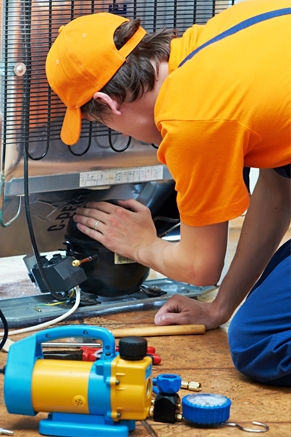Best practice for coolrooms and freezer rooms
Things are no longer done the way they always have been. Ask for best-practice options including the following:
- thicker insulation
- fast-closing automatic doors
- highly efficient refrigeration plant
- variable-speed compressors and fans
- natural refrigerant options
- application of secondary refrigerants for reduction of primary refrigerant charges
- volatile secondary refrigerants for reduced pumping power and improved humidity control
- reduced temperature differences across heat exchangers
- reduced compression ratios
- dual-stage compression
- low-energy LED lighting
- leak-tight pipe installation
- desuperheaters
- modern control and defrost strategies.
Ask the designer or contractor to identify the increased costs (from a standard package) and the running cost savings (compared to the standard package) over the expected life of the room or system. Also request a life-cycle cost (LCC) assessment.
Maintenance for energy efficiency
Just like servicing a car or a delivery vehicle, maintaining refrigeration systems makes them work better for longer.
Maintenance providers will:
 clean heat-transfer surfaces and air filters
clean heat-transfer surfaces and air filters- lubricate bearings
- check drive belts for tension and wear
- check operating temperatures and running currents
- check the refrigerant charge
- calibrate thermostats and controls
- perform a range of maintenance actions on fans, pumps and water-cooled condensers.
All of the above will keep your system running as smoothly and as cheaply as possible. Spending money on maintenance saves money on energy. Other maintenance benefits include a better storage environment for refrigerated product, increased system reliability (no business can afford stock loss due to system failure), and reduced noise, which may have been affecting staff, customers or neighbours.
Ask your maintenance provider or technician to routinely identify and discuss any low-cost adjustments that could be made to the system to improve its efficiency or reduce its energy consumption. Technical service providers are there to guide and inform you, so talk to them.[1]


